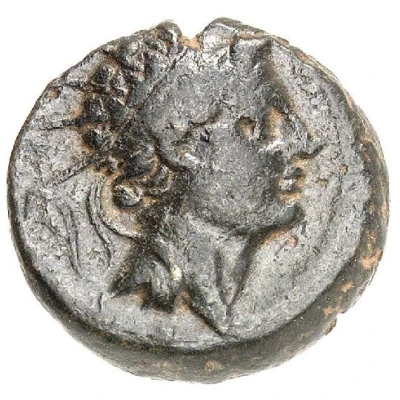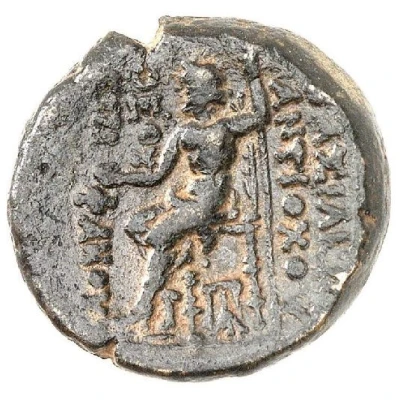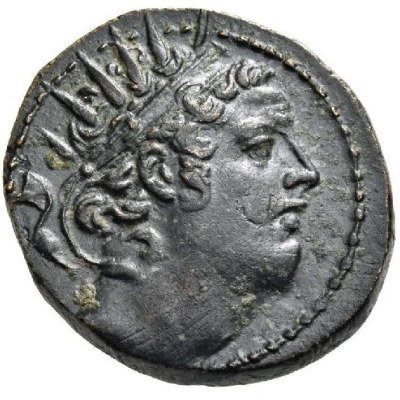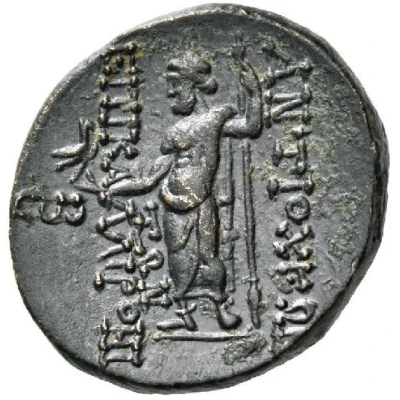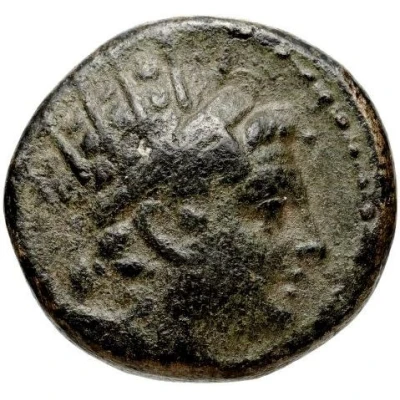
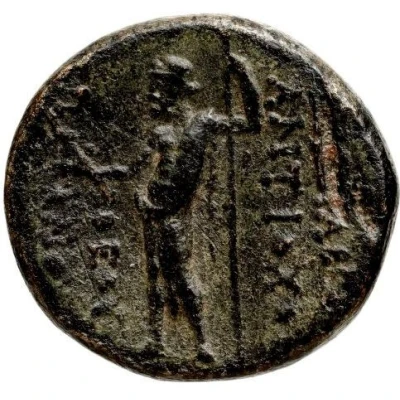

© Bibliothèque nationale de France / Gallica
Dichalkon - Antiochos IV Antioch 173 BC - 169 BC
| Bronze | 6.3 g | 18 mm |
| Issuer | Seleucid Empire (Seleucid Empire (305 BC - 64 BC)) |
|---|---|
| King | Antiochos IV Epiphanes (175 BC - 163 BC) |
| Type | Standard circulation coin |
| Years | 173 BC - 169 BC |
| Value | Dichalkon (1⁄24) |
| Currency | Drachm |
| Composition | Bronze |
| Weight | 6.3 g |
| Diameter | 18 mm |
| Shape | Round |
| Technique | Hammered |
| Orientation | Variable alignment ↺ |
| Demonetized | Yes |
| Updated | 2024-10-10 |
| Numista | N#426989 |
|---|---|
| Rarity index | 95% |
Reverse
Zeus standing left, holding thunderbolt and scepter.
Script: Greek
Lettering:
BAΣΙΛΕΩΣ
ANTIOXΟΥ
ΘEOY
EΠIΦANOYΣ
Translation: King Antiochos (IV) Theos Epiphanes
Interesting fact
One interesting fact about this coin is that it features a unique blend of Greek and Persian design elements. The obverse side of the coin depicts the king's bust, while the reverse side features a mythological creature, possibly a Griffin, which was a common motif in ancient Persian art. This blending of cultural influences reflects the complex history of the Seleucid Empire, which was founded by a Greek general but eventually came to encompass a vast territory that stretched from the Mediterranean to the Indus River.
